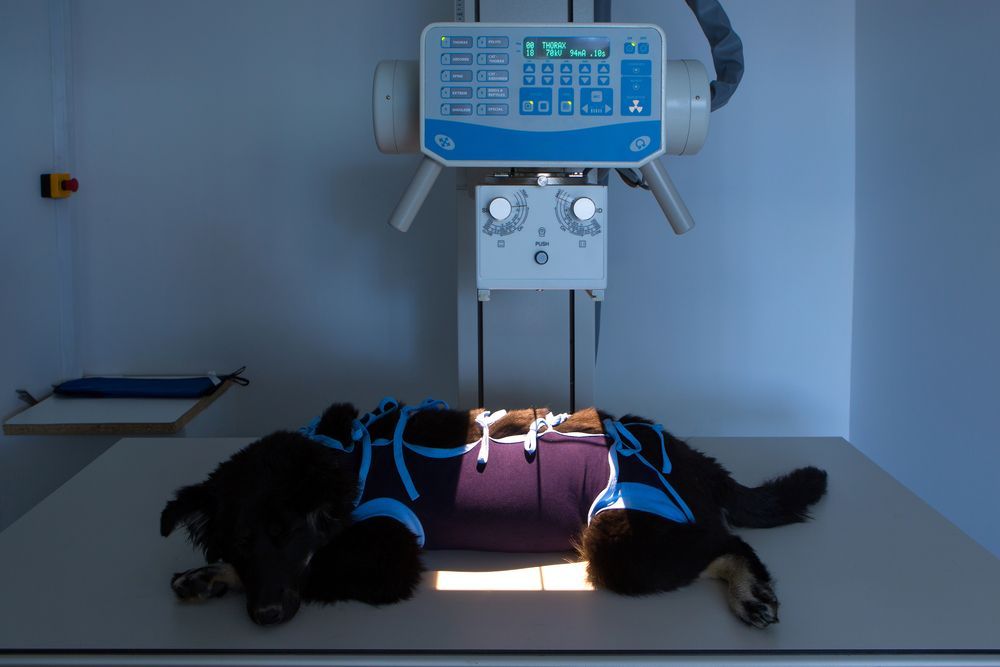offering Pet Ultrasounds in Diamond Beach
x-rays, ultrasounds & pathology
At Diamond Beach Veterinary Clinic on the Mid North Coast, we offer a range of diagnostic services, including pet ultrasounds, X-rays and pathology, to help identify and assess health issues in pets. These diagnostic tools are important for understanding underlying conditions, such as fractures, tumours and internal injuries, particularly when pets show symptoms that need further investigation.
Our clinic provides X-rays to evaluate bone health and locate possible fractures, while ultrasounds allow for detailed imaging of soft tissues and internal organs, helping to detect issues not visible through external exams. Pathology services, including blood tests and lab analyses, offer additional insights into your pet’s internal health, supporting an accurate diagnosis.
Our staff takes time to explain each diagnostic process, answer questions and discuss results in consultations. This approach helps pet owners feel informed and supported throughout their pet’s diagnostic journey.
Diagnostic imaging complements our clinic’s broader veterinary services, such as surgeries, preventative care and dental treatments, providing a well-rounded approach to pet health.
To learn more about pet ultrasounds or other diagnostic options, please contact Diamond Beach Veterinary Clinic on (02) 6559 2277.
key diagnostic tools
X-rays, ultrasounds and pathology are key diagnostic tools in veterinary care, helping veterinarians understand a pet’s health condition more accurately and identify issues that may not be apparent during a routine exam.
Each technique provides unique insights, supporting early detection and informed treatment decisions.
X-rays are commonly used to examine bone structure and detect issues such as fractures, arthritis or abnormalities in organs. X-ray imaging is quick and non-invasive, allowing veterinarians to identify skeletal or organ concerns that might impact a pet’s health or mobility.
Ultrasounds provide a view of soft tissues, including organs such as the liver, kidneys and heart. This imaging uses sound waves to create detailed images of internal structures, helping detect tumours, cysts or fluid buildup. Ultrasounds are especially valuable for diagnosing abdominal and thoracic issues, as they can reveal information that other tests may miss.
Pathology involves lab testing, such as bloodwork, urinalysis and biopsy analysis, to assess internal health. Through pathology, veterinarians can detect infections, organ function issues and underlying diseases that affect a pet’s quality of life.
Together, X-rays, ultrasounds and pathology can offer a comprehensive picture of a pet’s health. This may enable veterinarians to recommend appropriate treatments that can improve wellbeing.
Frequently Asked Questions
-
Why might my pet need an X-ray or ultrasound?
X-rays and ultrasounds help veterinarians diagnose health issues by providing a detailed look at bones, organs and tissues. These tools assist in identifying injuries, illnesses or abnormalities without invasive procedures.
-
Are X-rays and ultrasounds safe for pets?
Yes, X-rays and ultrasounds are widely used and generally safe for pets. Veterinarians take precautions to minimise exposure and help keep pets comfortable during these diagnostic procedures.
-
What is pathology, and how does it help my pet?
Pathology involves analysing blood, tissue or other samples to diagnose health conditions. This service helps detect infections, organ function issues and other conditions, allowing for more accurate treatment plans.
-
How should I prepare my pet for an X-ray, ultrasound or pathology test?
Preparation depends on the test. For some, fasting might be required, while others need no preparation. Your veterinarian may provide specific guidelines to help ensure accurate results and a smooth experience.
Partners
Site links
About us
Services
House calls
pet care
animals
Trading Hours
- Monday
- -
- Tuesday
- -
- Wednesday
- -
- Thursday
- -
- Friday
- -
- Saturday
- Closed
- Sunday
- Closed
Weekends and Public Holidays
Emergencies only
Contacts
T. 02 6559 2277
ABN: 22 676 660 138
Qualified Vets
Accredited Nurse
RVN
AVN
CIV VN
TAE
Australian Veterinary Association
Veterinary Nurses Council of Australia
2023 Localsearch Certificate of Trust






